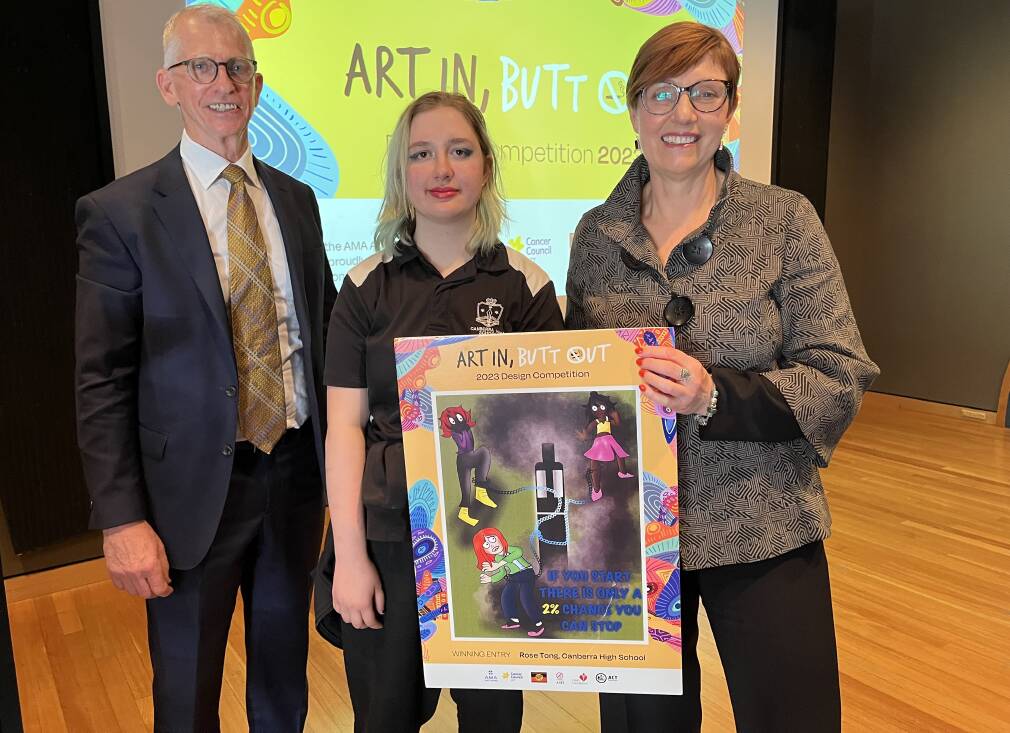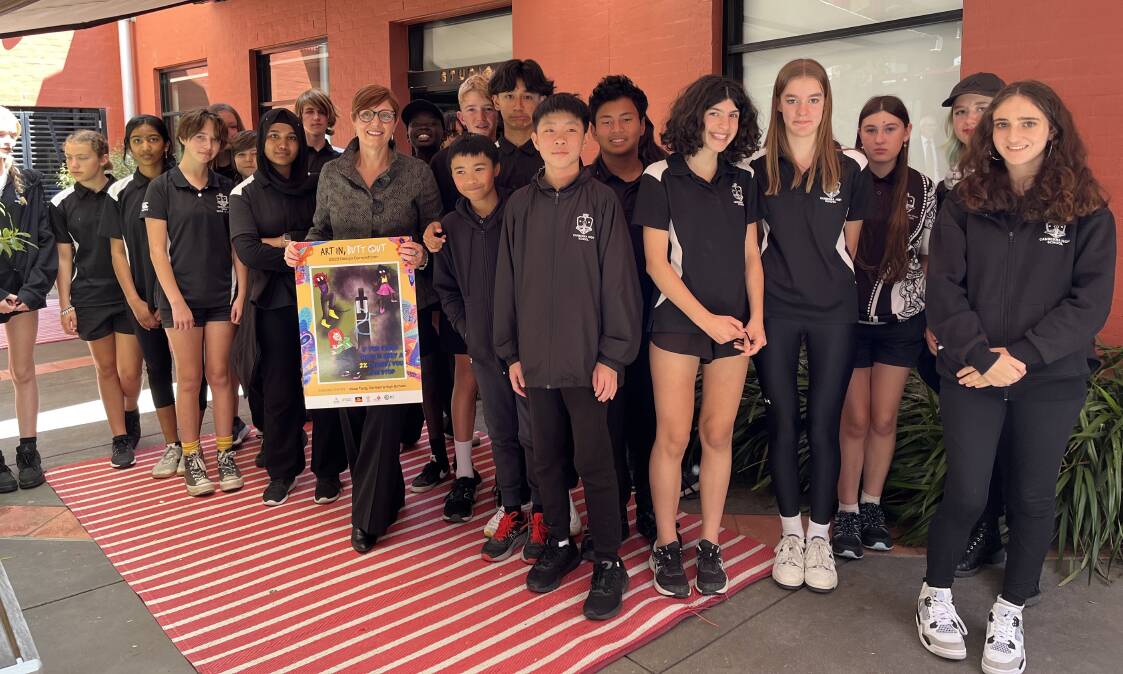Canberra High School Year 8 student Rose Tong "was excited at first and then I couldn't believe it" when she won the 16th annual Art In, Butt Out competition with a vivid warning about the addictiveness of vaping.
She said the win was a big confidence boost.
"Art has always been a big part of my life," she said. "I'm a very creative person and I use it to process my feelings."
Art In Butt Out is a competition open to students in Year 8 in all ACT schools.
The competition is conducted by the Australian Medical Association's ACT Tobacco Taskforce.
The taskforce is a coalition of community sector organisations, whose objectives are to reduce the uptake of smoking and vaping, by young people particularly, and to stop smoking in the community
Health Minister Rachel Stephen-Smith and association ACT president Professor Walter Abhayaratna announced the winning entry this week.
This year, students put their design and marketing skills to the test to come up with a poster aimed at reducing the number of young people who smoke or vape.

Professor Abhayaratna said all the entries were of a very high standard, adding he was pleased to see a number of entries highlighting the dangers of vaping.
"I was very interested to see the emergence of the theme of vaping in this year's entries," he said.
"It's become an issue for many young Canberrans, who are seeing their friends and family members take up vaping and are worried about what harm it is doing to them."
Rose's winning poster employed a cartoon style, with three teenage girls chained to a shadowy vape.
"Rose's artwork presents a bold warning to young people about the addictiveness of vaping," Professor Abhayaratna said. "Vapes have also been shown to contain an array of harmful substances, including nicotine."
Minister for Health Rachel Stephen-Smith said the ACT Government strongly supported the competition.
"I'm excited to see another powerful 'Art In, Butt Out' artwork representing a key message from young Canberrans about the harms caused by smoking," she said.

Ms Stephen-Smith said the competition was a crucial reminder about the health consequences of smoking and vaping.
"Very worryingly, for the first time in 20 years we have seen an increase in smoking rates amongst young people aged 14-17 years in Australia," she told the students.
"Researchers believe that young people are becoming dependent on nicotine through vaping and are then starting to smoke as well."
For 14-year-old Rose, her intention with her design was clear.
"I want young people to understand the dangers of smoking and vaping and how hard it is to stop," she said.
"I wanted people to feel scared to start it."
Ms Stephen-Smith stressed that vapes should not be considered harmless.
"The particles that people vape, and those around them breathe in, are of an ultra-fine size that is difficult to visualise," she said.
"Because they are so small, they penetrate deep into the lungs and can transfer via the bloodstream to every organ in the body."
Australian Medical Association ACT chief executive Peter Somerville said the association had been a strong advocate for greater regulation of vaping and was pleased to see reforms including a ban on the sale of all e-cigarettes in retail settings and a limit to the flavours, colours and other ingredients that can be used in e-cigarettes.
Mr Somerville thanked all the competition entrants for the high quality of their work.
"This is a powerful competition because the public health messages being created are designed by teenagers, for teenagers," he said.
"These students know what motivates their friends and how to most effectively convince them to make the smart choice."







